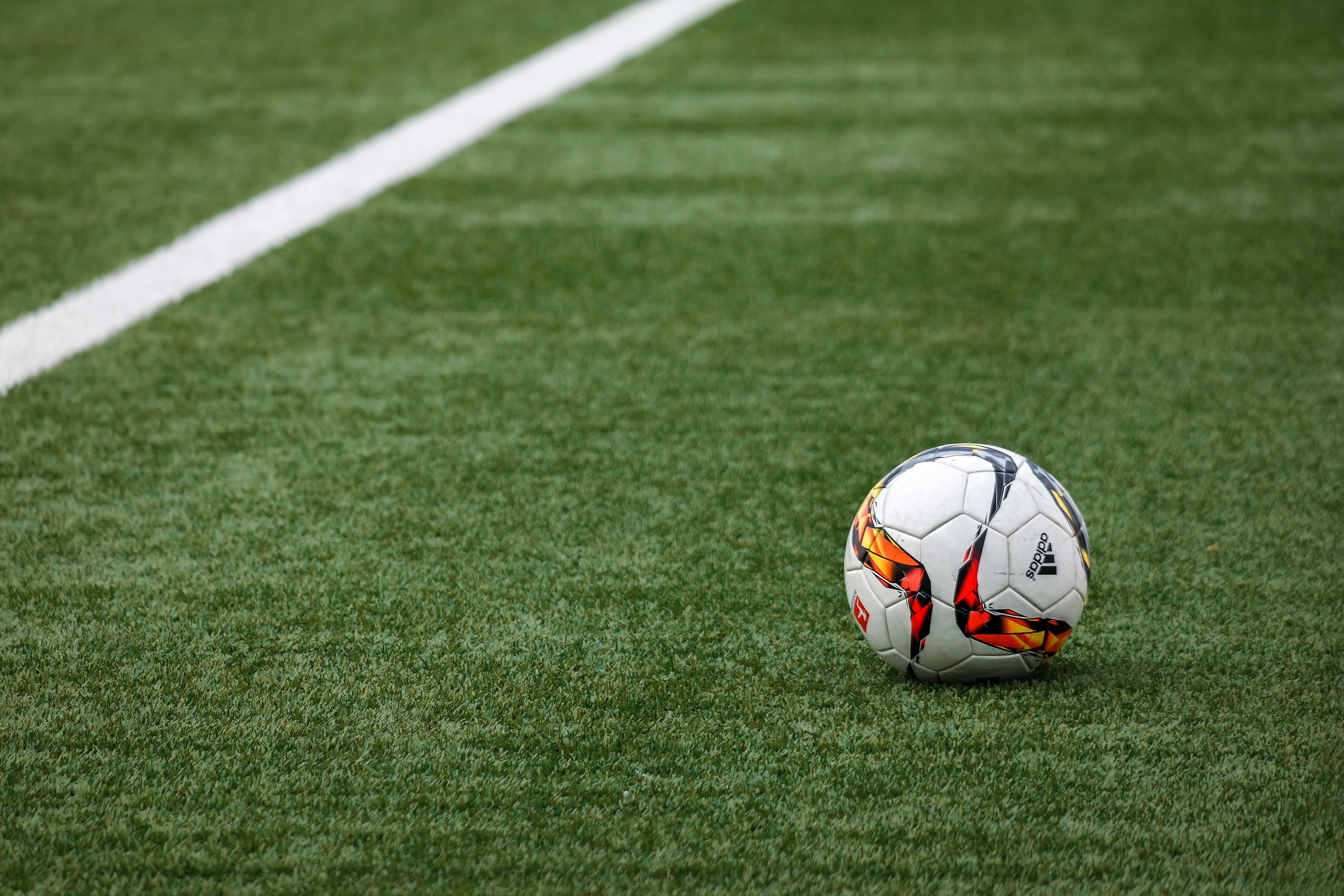The intricate process of manufacturing sports balls involves several steps that ensure the production of high-quality and durable products. From the initial design to the final inspection, every stage requires precision and expertise. Did you know that the first basketball was made from a leather cover stitched around a rubber bladder? This historical fact highlights the evolution of sports balls and their manufacturing techniques over the years.
One significant impact of the manufacturing process is the ability to customize sports balls to cater to the specific needs and preferences of athletes. Whether it’s the size, weight, or grip, manufacturers can tailor these aspects to enhance performance. Additionally, advanced technologies such as computer-aided design (CAD) and 3D printing have revolutionized the manufacturing process by allowing for more intricate designs and precise measurements.
Moving forward, let’s explore the key takeaways from the manufacturing process of sports balls. We will delve into the importance of material selection, techniques utilized in the production, and the significance of quality control measures. By understanding these aspects, we can gain a deeper appreciation for the craftsmanship and attention to detail required in creating sports balls that meet the demands of athletes across various disciplines.
Key Takeaways
1. The manufacturing process of sports balls involves multiple intricate steps, including cutting and shaping panels, stitching, and inflating the ball.
2. Advanced techniques such as high-frequency welding and heat pressing are utilized to enhance the durability and precision of sports balls.
3. The materials used in sports ball manufacturing vary depending on the type of ball, with popular choices including synthetic leather, rubber, and latex.
4. Quality control is a crucial aspect of the manufacturing process, with strict tests and inspections conducted to ensure the balls meet specified weight, size, and bounce standards.
5. Sports ball manufacturers are increasingly adopting sustainable practices, including recycling materials and reducing waste, to minimize their environmental impact.
What is the intricate process involved in manufacturing sports balls?
Types of Sports Balls
Sports balls come in various shapes and sizes, catering to different sports disciplines. From footballs, basketballs, and tennis balls to golf balls, rugby balls, and cricket balls, each type requires a specific manufacturing process to meet the unique demands of the sport.
Design and Conceptualization
The manufacturing process of sports balls begins with the design and conceptualization phase. In this stage, designers study the sport’s requirements and come up with innovative designs that ensure optimal performance. Factors such as shape, size, weight, and surface texture are meticulously considered to enhance the ball’s aerodynamics, grip, and overall usability.
Selection of Materials
Choosing the right materials is crucial to manufacture high-quality sports balls. The selection often depends on the sport and the desired playing characteristics. For example, footballs often consist of a synthetic leather outer cover with multiple layers of foam or rubber underneath for better control and durability. Tennis balls, on the other hand, are made of a rubber core covered with felt to provide the right amount of bounce and grip.
Manufacturing Techniques
The manufacturing techniques employed in the production of sports balls vary based on the materials and design. Here are some common techniques used:
Molding
Molding is a widely used technique where the materials are poured or injected into a mold to create the desired shape of the ball. This method ensures precision and consistency in the manufacturing process.
Stitching
Stitching is commonly used for balls with leather or synthetic leather covers, such as footballs and baseballs. Skilled craftsmen carefully stitch together multiple shaped panels to create a seamless and durable outer surface.
Pressurization
Sports balls often require pressurization to maintain their shape and playing characteristics. For example, basketballs and soccer balls are inflated with air, and tennis balls are pressurized with a specific amount of gas to achieve the desired bounce.
Quality Control
Ensuring quality and consistency is of utmost importance in the manufacturing process. Sports ball manufacturers employ rigorous quality control measures, including inspection of materials, testing of durability, weight, and various performance factors. Only balls that meet strict standards are deemed fit for the market.
Environmental Considerations
Manufacturers today are increasingly focusing on sustainable practices. They strive to minimize the environmental impact of production by using eco-friendly materials, adopting energy-efficient manufacturing processes, and promoting recycling and waste reduction.
Top Tips for Manufacturing Sports Balls:
- Adopt advanced manufacturing technologies to improve production efficiency and accuracy.
- Invest in research and development to continually innovate and meet evolving sports requirements.
- Collaborate with professional athletes and coaches to gather feedback and insights for product improvement.
- Ensure strict adherence to quality control measures throughout the manufacturing process.
- Consider environmental sustainability by utilizing eco-friendly materials and production methods.
- Regularly monitor market trends and consumer demands to stay competitive in the sports ball industry.
- Maintain transparent communication with customers regarding the manufacturing process and materials used.
- Continuously train and educate employees to enhance their skills and knowledge in sports ball manufacturing.
- Establish strong supplier partnerships to ensure a consistent supply of high-quality raw materials.
Frequently Asked Questions
1. How are sports balls manufactured?
Sports balls are manufactured through a meticulous process involving several steps. It typically starts with the selection and preparation of materials such as rubber, leather, or synthetic fabrics. The materials are then shaped and formed into panels, which are sewn or fused together to create the outer shell of the ball. Next, the ball is inflated and tested for quality and consistency. Finally, any necessary finishing touches, such as logo printing or surface treatments, are applied before the ball is ready for use.
2. What materials are commonly used in sports ball manufacturing?
Various materials can be used in the manufacturing of sports balls, depending on the type of ball and its specific requirements. Common materials include natural or synthetic rubber, leather, polyurethane, and synthetic fabrics like nylon or polyester. Each material has its own unique properties that contribute to the performance, durability, and feel of the ball.
3. Are sports balls made by hand or by machines?
The manufacturing of sports balls involves a combination of both manual and automated processes. While certain tasks such as cutting materials and sewing panels may be done by hand, many aspects of the production are performed using specialized machines. These machines ensure precision, speed, and consistency in the manufacturing process.
4. How important is quality control in sports ball manufacturing?
Quality control is of utmost importance in sports ball manufacturing. Strict quality control measures are in place at every stage of the production process to ensure that each ball meets the required standards. This includes thorough inspections for defects, weight and size measurements, and tests for durability, bounce, and other performance factors. Only balls that pass these quality control checks are deemed fit for sale and use.
5. Can the manufacturing process be customized for specific sports ball requirements?
Yes, the manufacturing process can be customized to meet the specific requirements of different sports balls. Different sports have unique regulations and performance expectations, such as size, weight, bounce, and grip. Manufacturers can adjust the materials used, the construction techniques, and the production parameters to ensure the final product meets these specific requirements.
6. How long does it take to manufacture a sports ball?
The time required to manufacture a sports ball varies depending on several factors, including the complexity of the design, the type of ball, and the production volume. Generally, it can take anywhere from a few minutes to several hours to complete the manufacturing process for a single ball.
7. Are there any environmentally friendly practices in sports ball manufacturing?
Yes, many sports ball manufacturers are implementing environmentally friendly practices in their production processes. This includes using sustainable materials, reducing waste, and implementing energy-efficient manufacturing techniques. Additionally, some manufacturers prioritize recycling and ensure that end-of-life sports balls can be properly disposed of or repurposed.
8. Are there any regulations or standards for sports ball manufacturing?
Yes, sports ball manufacturing is subject to various regulations and standards. These regulations can vary depending on the sport and the region, but they typically cover aspects such as size, weight, bounce, circumference, and durability. Compliance with these regulations is crucial to ensure fair play and consistent performance across different levels of sports.
9. Are there any advancements or innovations in sports ball manufacturing?
Yes, there have been significant advancements and innovations in sports ball manufacturing over the years. Manufacturers continually strive to improve the performance, durability, and safety of sports balls. This includes the development of new materials, advanced construction techniques, and the integration of technology to enhance features such as aerodynamics or grip.
10. How can manufacturers ensure their sports balls are of high quality?
To ensure high-quality sports balls, manufacturers follow strict quality control protocols throughout the manufacturing process. This involves careful selection and testing of raw materials, precise manufacturing techniques, and rigorous inspections and tests for each ball produced. Additionally, manufacturers often conduct thorough research and development to refine their products and incorporate customer feedback and industry trends.
Final Thoughts
Manufacturing sports balls is a highly intricate process that requires precision, expertise, and a thorough understanding of the specific requirements for each type of ball. From the selection of materials to the final quality control checks, every step of the manufacturing process plays a crucial role in delivering high-quality sports balls that meet the performance expectations of athletes and enthusiasts.
As technology and innovation continue to advance, we can expect further improvements in the manufacturing process of sports balls. These advancements will not only enhance the performance and durability of sports balls but also contribute to sustainability efforts and environmental consciousness. With the dedication and expertise of manufacturers, the intricate process of manufacturing sports balls will continue to evolve, ensuring that athletes and sports enthusiasts can enjoy the highest quality equipment for years to come.




